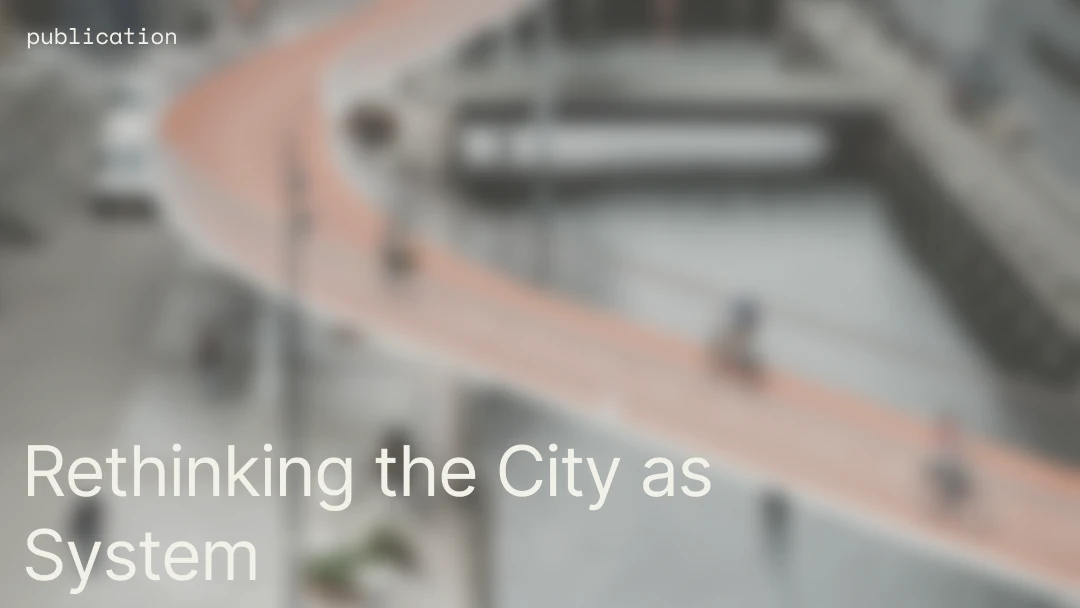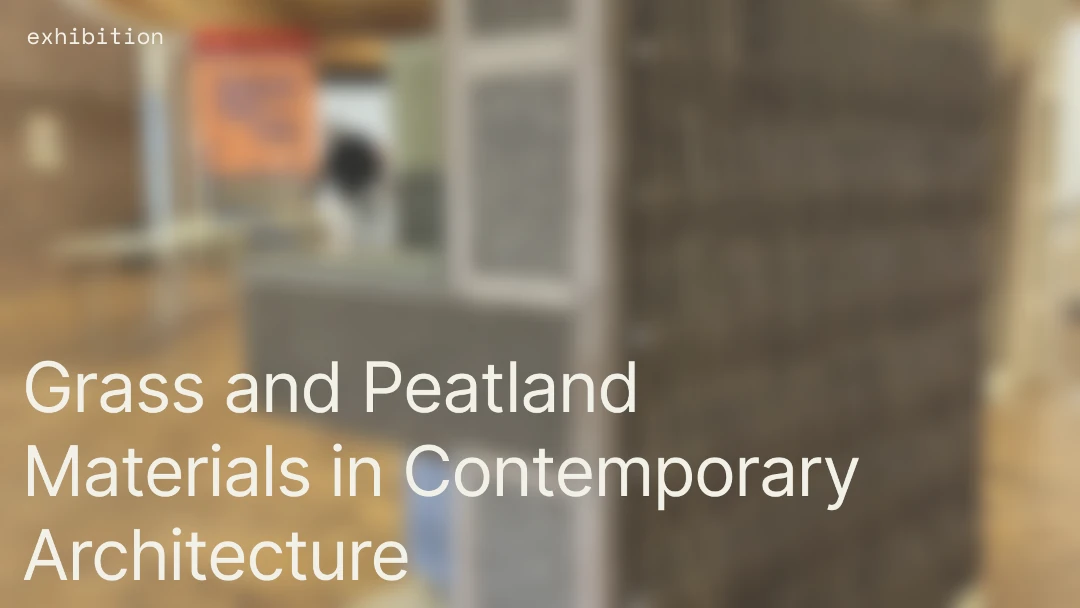
Bio
Tore Banke is an architect with 15 years of practice experience and holds a PhD in Sustainability and Computational Design and Performance Analysis. He has worked with several significant players in the industry like 3XN, COBE and for the last 10 years at BIG, where he has been serving in various roles such as Head of Computational Design and latest as Director of Sustainability. Today, Tore is the Head of Impact at TREDJE NATUR (aka. THIRD NATURE)— a Danish architecture firm with the ambition to create innovative responses to man-made problems through architecture and urban planning.
What drives you?
I've always had this kind of a desire for making a change and I think it really goes back to my childhood. It sounds a little bit cliche...When I look back, I realise that I grew up in a kind of ecosystem, created by my parents. I thought that everyone was living like that but I realised that was not really the case… My parents raised one of the first industrial windmills in Denmark (maybe even in the world), this was in 1980, and at the time the regulation was not that strict in terms of where you could build a windmill so it was placed right next to our house. The windmill was powering the house and the remaining electricity was sold to the grid. We lived close to the water and a forest, living very much in close connection with nature. We had a heat pump, which was not common back then, so there was a lot of “hacking” on how to optimise energy use and water use across the house and all facilities. Our large garden provided us with organic vegetables throughout all seasons. We were almost 100% sufficient.
I guess growing up in these incredible circumstances, I am aware that many of the topics we are struggling with today are very much related to this non-existent ecosystem, but on a much bigger scale. We need to learn how to scale these ecosystems up and we need to bring it to a societal level and build the infrastructures for it.
What does sustainability mean to you?
I mean, for me, I think it's very much a mindset and an ongoing, dynamic process. And it's a very “involving” process where you need to engage with all stakeholders.
In a way it's a word that cannot really be bent, right? I mean, either something can be sustained or it can't. So I see it very much as a vision towards a regenerative future. A future where we live in greater harmony and balance with ourselves and our surroundings.
Traditionally sustainability is seen as “having less”, which, from the current perspective, is often seen as having less joy and happiness in our lives. But that's not necessarily the case. I think architecture plays a super important and interesting role to show that a sustainable lifestyle can actually bring more happiness.
It is really about what we want to strive for. So much of how we live today is based on a norm or an idea we grew up with… So what could be this next vision?
I really believe one of the most important aspects is for us to figure out how to make sustainability attractive to people. Because currently, it's not a positive aspect for everyone. I think we as architects can help with sketching those visions out, creating a new desire for change.
What do you see as the main challenges today when you look at sustainability in the built environment?
In this industry, but also in our society, there is a very narrow focus on short-term profit.
I believe the main challenge is how our current financial system works, because you are not paying for the harm that you cause in the long term and you are not being credited for the good that you do. This system doesn't match the goals that we are currently setting. The system that has been set up based on the old and existing world, no longer fits and definitely doesn't fit our future.
The same happens across the process. Specifically in our industry, the fees in the early phases are extremely small. So when I talk about involving all stakeholders, it's also about involving the right people at the right time for a project. We know that 80% of the most important decisions are being taken in the first 20% of a project, but that's not where the fees are. So there is a big imbalance between the impact of these decisions and the corresponding fees, creating a significant disparity.
What is your opinion on the standardisation of LCA and Material Data?
Looking 5-10 years back, it's amazing what has happened. We are becoming much more aware in terms of Carbon, Lifecycle and Toxicities and it is definitely going in the right direction. And certainly, standardisation and regulations are helping us create a common language and some common goals.
But there's also a problem with what we don't measure. Both in terms of what we choose to measure, but also what we don't know…And I think there are two things that we need to be critical about…One is the whole carbon tunnel vision, the fact that we only look at the emissions within the LCA. And we need to look at so many other parameters.
Also, there's a paradox to consider. Peter Drucker once said, 'What gets measured gets managed,' which I firmly believe. We need to improve at quantifying the impacts of our actions, both in the short term and long term. However, the paradox lies in the fact that we will never fully capture the complexity of the real world to predict everything with full precision. There will always be some level of uncertainty, but that should not prevent us from taking action in areas that are difficult to quantify. We must also rely on our common sense, as well as social and cultural dimensions, for everything.
So how do we move towards a new material palette?
Of course the easy answer is that we always need more research and development…And adjusting the current regulation including risk management.
But I think part of the struggle is that we need much more awareness around what is happening through the entire value chain. Especially when it comes down to our society. As we talked about earlier, there is a branding element to it, because people need to demand this new quality. And it has to be desirable. The problem is that most people don't have that insight, they look at the price of a product but don't actually know where the product comes from and how it affects the surroundings.
It would be amazing if in the near future people don't want to live in buildings that are not constructed of bio-based or upcycled materials with low negative impact on nature, because it doesn't fit their values.
And again, going back to the economic system, it's about flipping things around, and creating certain market incentives, to get rewarded for doing positive things. Because as an industry we have to understand and define the value of placing bio-based materials in a building right now.
You just gave a glimpse of how society could see buildings in the future and potentially create certain demands. If you could picture the entire industry by 2030, what do you see?
We will be seeing a new adjusted economic system. We will leave the existing system which is all about maximising profit and promoting continuous growth, disregarding the long-term impacts of the environment.
We would also see a system where we, as businesses, have to pay for the harm we do to our surroundings. At the same time, we will be credited for the positive impacts we have to our surroundings, environmentally, socially and financially.
I wish to see that as architects we will shift our role towards system thinkers, looking across the entire value chain and ecosystem and having a true lifecycle perspective that goes beyond CO2, across all aspects of life. And making it a default for architecture and construction.
As someone who has been pushing for change for many years, do you have any advice for those who strive to make changes?
Change is always difficult, complex and messy. My advice would be to stay curious and open, because changing the future is not easy and you will meet many people with many different opinions and you will have to stay open-minded and constantly willing to learn and grow.
Remember to reach out for help and feedback. This is something I learnt during my PHD, people are in general super helpful and willing to help if you invite them into the process. Reach out across and invite them in.
I genuinely believe that people are not intentionally trying to cause harm. I hold that people are generally good, and their actions and thoughts are often shaped by their knowledge and specific circumstances. This perspective provides an opportunity to understand diverse viewpoints and motivations, which can be leveraged to drive meaningful change.
Also people know what they have and have had, but they don't know what they will get. There is a natural resistance when looking at the future, and it's important to be aware of that. People are not necessarily fighting against you but are naturally a little more resistant and critical when it comes to the unknown.
Sometimes you might fail, fail, fail, and fail. Remember that when you fail, you might be learning the most, even if it doesn't seem apparent at the moment — embrace this and use it to improve. Sometimes it's just bad timing, and there is nothing wrong with what you do, how you do it, or who you collaborate with. However, continuously reflect on the context, timing, and the people you work with. Suddenly, things will happen — so be consistent and push forward; everything will come together at the right time.




























